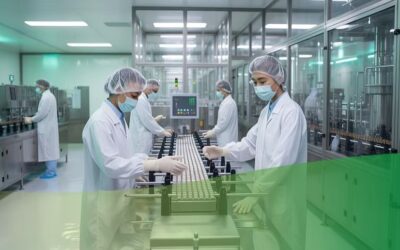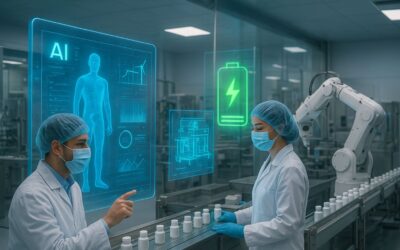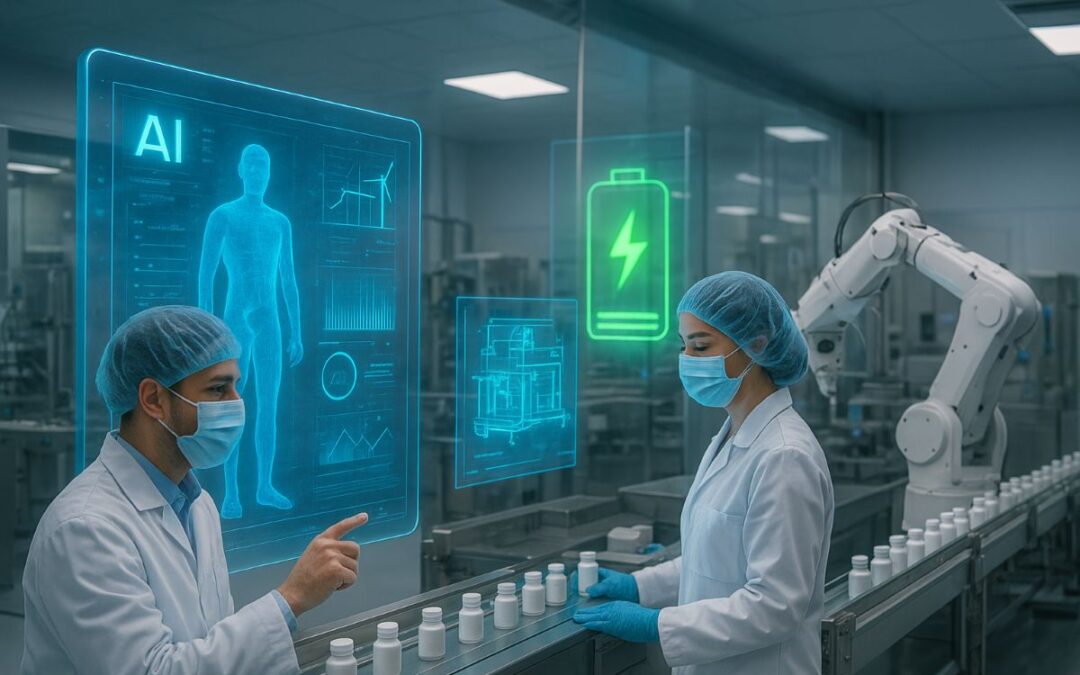The life sciences sector is undergoing a significant transformation as it embraces sustainable and green manufacturing practices. These initiatives aim to reduce environmental impact, enhance operational efficiency, and meet the growing demand for eco-friendly products. From adopting renewable energy sources to implementing circular economy principles, the industry is making strides toward a more sustainable future.
Renewable Energy Integration
A pivotal shift in life sciences manufacturing is the transition to renewable energy sources. Companies are increasingly investing in solar, wind, and hydroelectric power to reduce their carbon footprints. This move not only aligns with global sustainability goals but also offers long-term cost savings by mitigating the volatility of fossil fuel markets. For instance, AstraZeneca has inaugurated a new biomethane plant in Lincolnshire, UK, which will produce biogas from organic waste and supply 100 GWh of renewable energy annually to its research and development and manufacturing sites in the country. Similarly, Life Lab Manufacturing has committed to switching to 100% certified renewable electricity by February 2028, covering all its manufacturing operations.
Green Chemistry and Sustainable Product Redesign
Green chemistry principles are being integrated into product development to minimise environmental impact. This approach focuses on designing products and processes that reduce or eliminate the use of hazardous substances. In the UK, collaborative research projects funded by organisations like the Biotechnology and Biological Sciences Research Council (BBSRC) and Innovate UK are exploring sustainable biomanufacturing solutions.
Circular Economy Practices
Implementing circular economy principles is another strategy gaining traction in life sciences manufacturing. This model emphasises the reuse and recycling of materials, reducing waste and conserving resources. Companies are redesigning products to be more durable and easier to recycle. Industry analysts highlight that circular economy strategies are increasingly seen as a key driver for long-term sustainability in pharmaceutical and biotech operations.
Waste Reduction and Resource Efficiency
Efforts to minimise waste and improve resource efficiency are central to green manufacturing. Life sciences companies are implementing strategies to reduce water and energy consumption, as well as minimise material waste. Technologies such as closed-loop systems and clean-in-place (CIP) procedures are being utilised. For example, pharmaceutical companies are adopting smart cleaning protocols that both cut resource use and enhance safety standards.
Digitalisation and Smart Manufacturing
The adoption of digital technologies is enhancing sustainability in life sciences manufacturing. Smart sensors and digital twins are being used to monitor equipment performance and simulate production scenarios. Additionally, machine learning approaches are being applied to agile manufacturing with recycled materials, providing decision support for sustainable practices. Recent studies on digitalisation in sustainable manufacturing highlight its transformative potential for life sciences operations.
Government Support and Policy Initiatives
Government policies play a crucial role in promoting sustainable manufacturing practices. In the UK, the government has announced a ten-year industrial strategy that includes significant investments in advanced manufacturing and clean energy. This initiative is expected to drive innovation and support the transition to a low-carbon economy.
Challenges and Future Outlook
Despite progress, challenges remain in fully integrating sustainable practices across the life sciences industry. The complexity of supply chains, regulatory hurdles, and the need for significant investment in new technologies can impede adoption. However, the growing demand for sustainable products and the potential for cost savings are motivating companies to overcome these obstacles.
Conclusion
Sustainable and green manufacturing practices are becoming integral to the life sciences industry. Through renewable energy adoption, green chemistry, circular economy principles, waste reduction strategies, digitalisation, and supportive government policies, the sector is making significant strides toward sustainability. While challenges persist, the commitment to environmental stewardship is paving the way for a more sustainable future in life sciences manufacturing.













